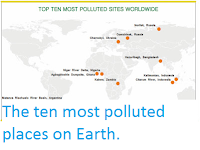Forty one people have been confirmed dead and over 1500 people have been infected in an epidemic in the Zambian capital Lusaka this year. The first cases occurred in September 2017, and are though to have been related to unsafe water from shallow wells in poorer parts of the city, with tests showing that 42% of such water sources were infected with the Bacterium. The spread of the disease appeared to abate in October, then returned sharply in November, with about 60 new cases being reported every day by the end of December. This renewed outbreak has been linked to poor hygiene in the cities food markets and street food stalls, with samples of fresh fruits and vegetables, as well as cooked meats and other ready-to-eat foods found to be infected.
Cholera victims being treated in an emergency field hospital in Lusaka. Lusaka Times.
Cholera is caused by the Bacterium Vibrio cholerae, a Gram-negative, comma-shaped Gammaproteobacteria, related to other pathogenic Bacteria such as Yersinia pestis (Bubonic Plague), and Esherchia coli (food
poisoning). The Bacteria produce proteins which can cause watery
diarrhoea, which helps spread the disease, and can prove fatal in severe
cases, as patients are killed by extreme dehydration.
SEM image of Vibrio cholerae Bacteria. Kim et al. (2000).
See also...
Follow Sciency Thoughts on Facebook.








